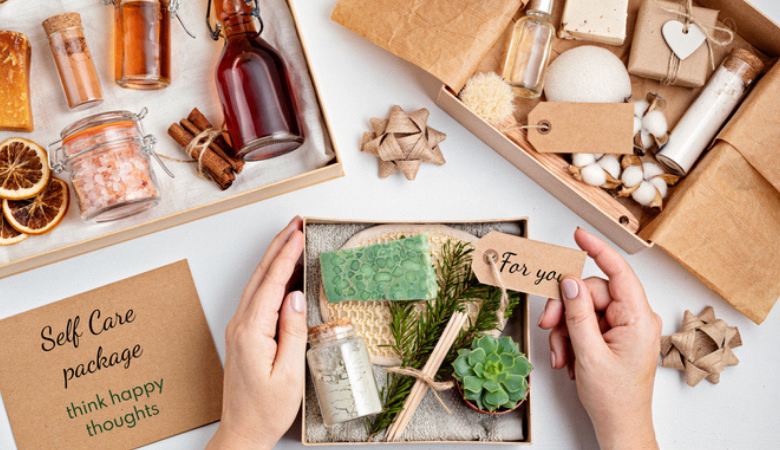The Art and Science of Cosmetic Packaging: Design, Functionality, and Sustainability

Cosmetic packaging is more than just a vessel for beauty products; it’s an intricate blend of artistry, functionality, and sustainability. In an industry driven by visual appeal and consumer experience, the packaging plays a pivotal role in capturing attention, conveying brand identity, and preserving product integrity. From luxurious glass bottles to eco-friendly alternatives, the choices in cosmetic packaging materials and designs reflect evolving consumer preferences and industry trends.
Introduction to Cosmetic Packaging
In the competitive landscape of the cosmetic industry, packaging serves as the first point of contact between consumers and products. Its importance cannot be overstated, as it not only protects the contents but also communicates brand values and influences purchasing decisions. Over time, cosmetic packaging has evolved from simple containers to sophisticated designs that marry form with function. Today, packaging is seen as an integral part of the product experience, with brands investing heavily in innovative designs and sustainable solutions.
Importance of Cosmetic Packaging Design
The design of cosmetic packaging plays a crucial role in shaping consumer perception and driving brand loyalty. A well-designed package not only catches the eye on the shelf but also conveys the essence of the brand and the product it contains. From bold colors and striking graphics to elegant typography and tactile finishes, every element of the design is carefully crafted to resonate with the target audience. Moreover, ergonomic considerations ensure that the packaging is not only visually appealing but also practical and user-friendly.
Materials Used in Cosmetic Packaging
The choice of materials in cosmetic packaging is influenced by factors such as aesthetics, functionality, and sustainability. Plastic, despite its versatility and affordability, is facing increasing scrutiny due to its environmental impact. Glass, on the other hand, is prized for its premium look and recyclability but comes with its own set of challenges, including weight and fragility. In recent years, there has been a growing demand for sustainable alternatives, such as biodegradable plastics, bamboo, and recycled materials, which offer a more eco-friendly option without compromising on performance or aesthetics.
Functional Aspects of Cosmetic Packaging
Beyond aesthetics, cosmetic packaging must fulfill a range of functional requirements to ensure the quality and usability of the product. Barrier properties are essential for protecting the contents from light, air, and moisture, which can degrade the formulation over time. Dispensing mechanisms, such as pumps, droppers, and airless containers, are designed to provide precise dosing and minimize waste. Innovations in packaging technology have also led to the development of active packaging solutions that extend the shelf life of products by incorporating ingredients that inhibit microbial growth or oxidation.
Regulatory Considerations in Cosmetic Packaging
The cosmetic industry is subject to stringent regulations governing the safety, labeling, and marketing of products, including their packaging. In the United States, the Food and Drug Administration (FDA) oversees the regulation of cosmetics, ensuring that they are safe for consumer use and accurately labeled. Compliance with these regulations is essential for cosmetic brands to avoid legal repercussions and maintain consumer trust. Additionally, international standards and certifications, such as ISO 22715 for packaging and labeling requirements, provide guidance on best practices in cosmetic packaging design and manufacturing.
Trends in Cosmetic Packaging
In response to changing consumer preferences and market dynamics, cosmetic packaging trends continue to evolve, reflecting broader shifts towards sustainability, minimalism, and personalization. Minimalist packaging designs, characterized by clean lines and simple graphics, appeal to consumers seeking authenticity and transparency in their beauty products. Customization and personalization options, such as monogramming and color choices, allow brands to create unique experiences tailored to individual preferences. Furthermore, advancements in technology, such as augmented reality (AR) and near-field communication (NFC), are enabling interactive packaging experiences that engage and delight consumers.
Sustainable Packaging Solutions in the Cosmetic Industry
As environmental concerns become increasingly prominent, the cosmetic industry is under pressure to adopt more sustainable packaging solutions. Brands are exploring a variety of approaches to reduce their environmental footprint, from using recycled materials and biodegradable plastics to designing packaging that is refillable or reusable. Life cycle assessments (LCAs) are employed to evaluate the environmental impact of packaging materials and processes, helping brands make informed decisions that minimize their carbon footprint and resource usage. Moreover, collaborations across the supply chain and industry initiatives, such as the Sustainable Packaging Coalition (SPC) and the Ellen MacArthur Foundation’s New Plastics Economy, are driving collective action towards a circular economy model for packaging.
Branding and Marketing Strategies through Packaging
Packaging serves as a powerful tool for branding and marketing in the cosmetic industry, allowing brands to differentiate themselves in a crowded market and connect with consumers on an emotional level. By leveraging packaging design, color psychology, and storytelling, brands can communicate their unique value proposition and create memorable experiences that resonate with their target audience. Limited edition packaging releases generate excitement and anticipation among consumers, driving sales and fostering brand loyalty. Additionally, packaging innovations, such as smart packaging and interactive features, enable brands to engage with consumers beyond the point of sale, creating opportunities for ongoing interaction and relationship-building.
Innovations in Cosmetic Packaging Technology
Advancements in technology are revolutionizing cosmetic packaging, enabling brands to enhance product performance, safety, and user experience. Nanotechnology is being used to develop innovative packaging materials with enhanced barrier properties, antimicrobial coatings, and controlled-release functionalities. Anti-counterfeiting measures, such as holographic labels and digital watermarks, help brands protect their products and maintain consumer trust in an increasingly digital world. Interactive packaging solutions, such as QR codes and augmented reality (AR) experiences, provide consumers with valuable information and immersive brand experiences at the point of sale.
Challenges and Solutions in Cosmetic Packaging
Despite the many benefits of cosmetic packaging, brands face a range of challenges in designing, producing, and implementing packaging solutions that meet consumer expectations while also addressing environmental concerns. Balancing aesthetics with functionality can be a delicate task, requiring careful consideration of design constraints, material limitations, and cost considerations. Additionally, the transition to sustainable packaging presents its own set of challenges, including sourcing sustainable materials, redesigning packaging formats, and managing supply chain complexities. However, by embracing innovation, collaboration, and a commitment to sustainability, brands can overcome these challenges and drive positive change within the industry.
Future Outlook of Cosmetic Packaging
Looking ahead, the future of cosmetic packaging is likely to be shaped by continued innovation, sustainability, and consumer-centric design. Emerging trends such as biodegradable packaging, 3D printing, and personalized packaging experiences are poised to transform the landscape of the cosmetic industry, offering new opportunities for brands to differentiate themselves and engage with consumers in meaningful ways. Moreover, as environmental consciousness continues to rise, brands will be under increasing pressure to adopt more sustainable practices throughout their supply chains, from sourcing raw materials to end-of-life disposal. By embracing



